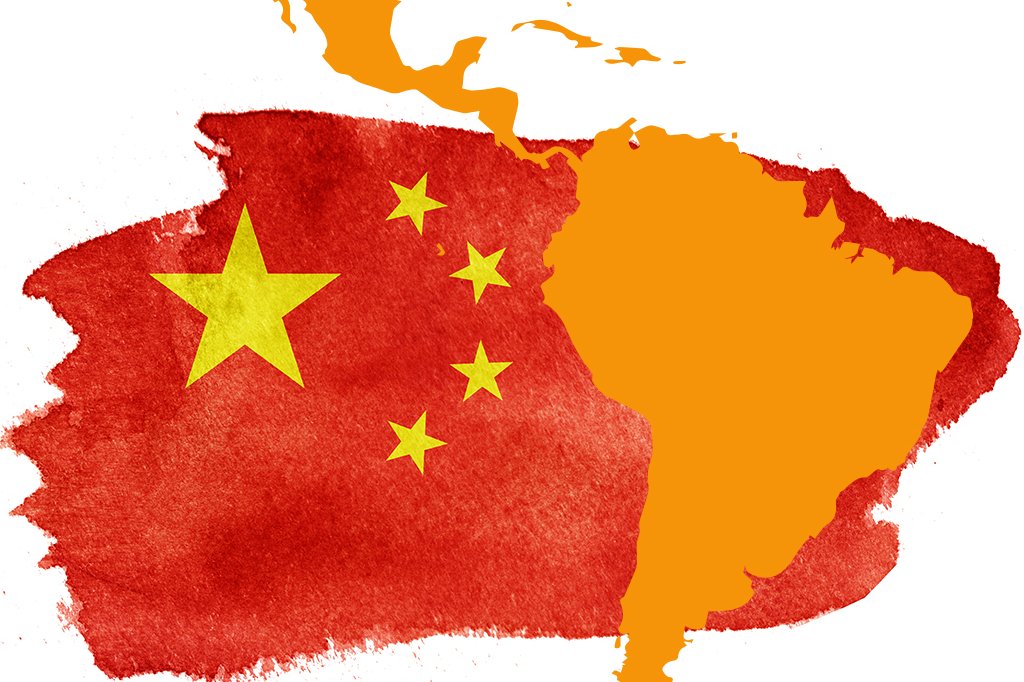Over the past two decades, companies from the People’s Republic of China (PRC) have US$160 billion in Latin America.
Twenty-one countries have committed to China’s Belt and Road Initiative (BRI).
The “New Silk Road Initiative” is a foreign policy concept of the Chinese government to integrate the economic areas of Asia (with China at the center), Europe, and Africa.
In continuation of the strategies for the development of China’s western provinces (“Go West”) and the internationalization of Chinese companies (“Going out”), the Chinese government is focusing on investments in the construction of roads, railroad lines, ports, pipelines, energy networks, and fiber optic lines.

The aim is to create the conditions for economic growth in less developed countries in these regions, open up new markets, and increase economic, political, and cultural exchange.
China is seeking to “rewire” the region for its own economic advantage, secure access to raw materials and markets, capture value creation, and focus on “connectivity.”
The People’s Republic companies are involved in forty significant projects in the port sector. China has built several wind, solar, and hydroelectric plants, albeit with problems.
For example, Ecuador’s Coca-Coda Sinclair Dam had over 7,600 cracks and caused massive erosion that damaged one of the country’s major oil export pipelines.
In Chile, Chinese-based companies control an unprecedented fifty-seven percent of electricity distribution.
The PRC’s growing presence in digital architecture concerns intelligence agencies because of China’s history of intellectual property theft and cyber espionage.
In December 2021, Microsoft uncovered hacking attacks by PRC-based Nickel that targeted companies in sixteen Latin American countries, among others.
In telecommunications, Huawei has expanded its Latin American presence for two decades and is now poised to dominate its 5G networks.
Companies based in China are playing a growing role in the region’s eCommerce, including “Alibaba.” Chinese ridesharing company “DiDi Chuxing” holds half of the market in Latin America and collects data on passenger movements and finances.
Chinese monitoring and control systems such as “ECU-911” and “BOL-110” collect similarly sensitive data, as do the ten PRC-built “smart cities” currently in the region.
PRC-based “Hikvision” has acquired “Syscom,” Mexico’s largest security systems company.
The Chinese company “Nutech” airport scanners collect data from the devices that pass through them. In Chile, the PRC-based company “Aisino” almost won the right to manage the Chilean registry office.
In Argentina, a space radar operated by the People’s Liberation Army (PLA) can capture communications from passing satellites.
China also promotes its interests through Latin American institutions. The president of the “IADB,” Mauricio Claver-Carone, has criticized Beijing for using its membership in the bank to win contracts for Chinese companies.
On the security front, China is a major supplier of military equipment to the region, including fighter jets, transport aircraft and radars for Venezuela, helicopters and armored vehicles for Bolivia, and military trucks for Ecuador.
Argentina may acquire the FC-1 fighter, the most advanced aircraft the PRC has sold to the region to date.
Officials of the “PLA” are planning how they would use Latin America in a future war, using the knowledge and relationships they have built today to accomplish this.
To this end, the “PLA” has conducted twenty military operations in the region, and since 2000, senior “PLA” officials have visited the region two hundred times.
As part of its “people-to-people” diplomacy, China’s forty-four Confucius Institutes attract those who want to learn Chinese and bring the best to study in China with Hanban scholarships, where some subsequently obtain China-related positions in their own governments.
The China-CELAC plan for 2022-2024 promises five thousand such scholarships for Latin American students. China also engages academics, journalists, politicians, and officials from the region through luxurious paid trips to China.
In pursuing its regional interests, China acts as an “incubator of authoritarian populism” by providing loans, investments, and commodity purchases that give liquidity to authoritarian actors as they consolidate power.
China also provides the mechanisms that help its authoritarian friends stay in power.
China’s “CEIEC” in Venezuela helped the Maduro regime spy on the opposition.
In Cuba, Huawei technologies helped cut off protesters from the outside world during the July 2021 uprising.

